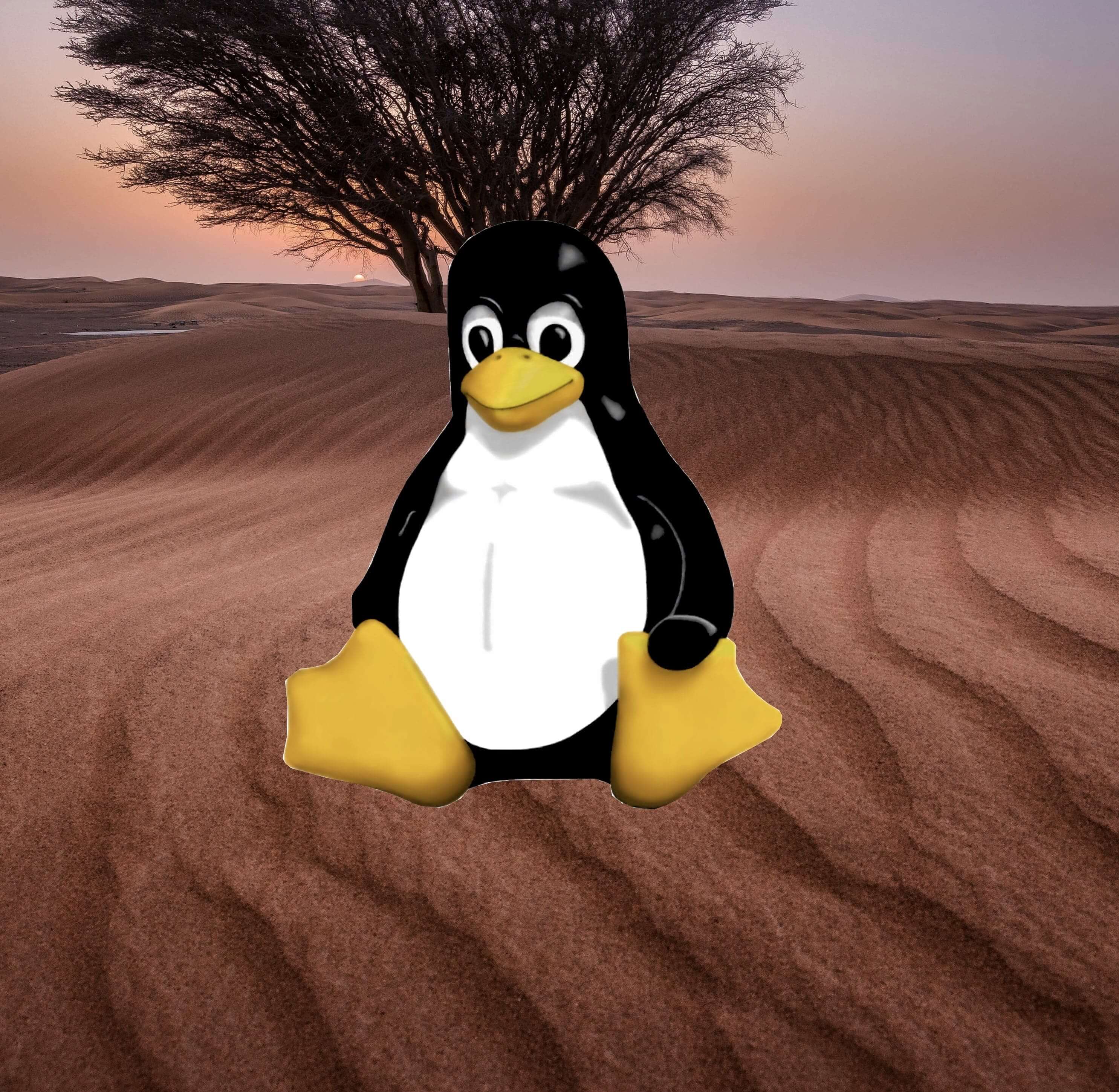I’m feeling more tired about Windows, and the reason I haven’t switched yet to Linux is because I need some programs that only exist on Windows. But, at this point, I’m focusing on ditching these programs and finding alternatives for them…
Last year, I experienced Linux Mint, but, at least on my PC, it feels clunky when I need to do some little video editions and I found it more stable on Windows.
However, I’m going to try again Linux distros with a virtual box, but I’m a little “”“scared”“” to move on again to Linux Mint since my last experience with editing videos.
I don’t need an extremely powerful program to make these editions. Olive, or something like that, suits me perfectly. So, in your opinion, which distro should I try on one virtual box for my daily use for these purposes?
Making a dual boot, from your point of view, is problematic? I see so many different opinions about dual boot, but at this time, I don’t know what to think.
My pc
-
Processor: AMD Ryzen 3 PRO 2100GE with Radeon veja graphics
-
RAM: 8gb
Edit : ty for the replys so far, mates
I wouldn’t recommend editing videos using a virtual machine, the performance will probably be quite miserable.
How noob am I, huh? Ty for the advice mate
Edit: zero irony here
The issue is that programs can’t directly use your gpu when using a virtual machine
I guess you never heard of GPU Passthrough… https://github.com/bryansteiner/gpu-passthrough-tutorial/
GPU passthrough requires two GPUs, a system with compatible components, a lot of caffeine and a lot of patience. Not something for someone who wants something that just works.
It only requires it if you want the host to have a gpu, too. Otherwise, single-gpu passthrough is very much possible
The chasm between “possible” and “click this option to enable” is vast.
That’s the case with proper hardware passthrough either way. Just wanted to make it clear that running a VM doesn’t automatically bring the need for two GPUs
My experience with single GPU passthrough on Proxmox to a media VM was pretty positive, especially for it being an old Nvidia card. Even as someone doing it for the first time, it just took about 10 minutes to figure out the passthrough itself and another ~15 to figure out some driver issues. And it’s worked perfectly since then. All in all much better than what I’d expected.
What I said especially applies for single GPU passthrough, minus the two GPU part, I say that because I’ve done that on Desktop.
Single GPU passthrough (for me) was a journey of misery where a series of bash scripts with crude busyloop synchronization kept me from having no display output and needing to restart my system to test my changes again.
It’s probably the last thing I’d recommend for someone who wants something that works, unless you know something I don’t.
And integrated GPU counts, so you could use the integrated one for the host and a discrete card for the guest.
That’s a really nice option, yeah. No need for the extra expense when the CPU you use or are going to buy has an iGPU anyway
Either he never heard of it or he decided he did not want to bother following the 200 page tutorial filled with fiddly bits.
OP probably doesn’t have two GPUs in their computer.
I’m probably wrong, but isn’t supposed to work if my CPU have a iGPU and I have a GPU? I genuinely ask, I’m not sure.
An iGPU counts as a GPU.
You don’t need two.
His CPU has integrated graphics. He can do full passthrough.
Now, if he’s doing that with a Type 2 hypervisor, I suspect the performance will still be lackluster for video editing, if it’s even supported.
Which means he’s also going to have to learn to use KVM.
Did OP mention a dedicated GPU? I’d assume a rather low end 2100GE wouldn’t likely be paired with a dGPU.
I know this exists but from what I understand, OP is using VirtualBox, which doesn’t support it and instead of going through the effort to set it up, you might as well just dual boot
Very useful tip for a linux newbie with a laptop which has only igpu.
He’s also very clearly going to be running the vm with a Windows host… More likely than not that means virtualbox, not spending money on software / hardware that does it well and easily on windows just to test out… Truly the best option here for OP is dual boot.
Try to double your ram and if you don’t have ssd, get one. Your cpu and gpu is powerful enough for light video editing. Also amd drivers are shipped in the Linux Kernel so you don’t need to do anything for them.
Distro doesn’t really matter here. Choose any that you like.
The distribution shouldn’t matter a lot. Just look at your preferred tools and see what they package for.
Which video editor did you use ? Mint shouldnt fell clunky out of the box, maybe the editor you choose was too much for your hardware, or you had some hardware/instalation specific issue, Da Vinci Resolve is quite heavy on resources, maybe Kdenlive would perform better on this machine.
There are many lightweight basic video editors o linux, give them a try to check if the clunkynes go away.
I used kdenlive and feel it clunky.
And tried install DaVinci but dont works.
Kdenlive has the option to use proxy clips. Makes it way faster. You could also try a other video editor like Shotcut. The DaVinci resolve Deb works best on Ubuntu in my experience. As for a distro Linux mint is a good choice, you could try the XFCE version as it’s more lightweight. If you choose Kdenlive, maybe try the package if you’re using the flatpak or the opposite, as sometimes one of the versions works better
Didnt know about that proxy clips, ty. Maybe trying ubuntu ( https://ubuntu.com/download ) will gone run olive (or kdenlive, etc) better, no?
I guess , at this point, trying ubuntu can be a good choice
Standard Ubuntu is slightly slower than standard Mint, but apps not in the App Store (like DaVinci resolve) are mostly designed for Ubuntu so they work best on Ubuntu, but for apps like Kdenlive it doesn’t matter
Oh, OK. Ty
Don’t try openshot next, it’s even worse.
-
Trying Linux in VirtualBox for 3D gaming or video editing will give you poor performance. You may get better performance running Linux from a Linux live usb/cd image.
-
For video editors Shotcut is gaining popularity and features. It is also available for Windows so you can try it without a Linux installation : https://shotcut.org/download
-
Not sure if for video editing you should go for a specific Linux flavor, like https://ubuntustudio.org but “distro-hopping” is not a bad thing in my opinion. Try a few Linux distributions and see what you like and dislike, and then decide on your favorite. A tool like Ventoy can make it very easy to have ten or more Linux flavors on your usb pen drive to play with.
-
Take a look at „The Linux Experiment“ on YouTube or tidal. He switched his whole setup to Linux and runs a business on top of free software, including editing his screen casts.
Edit: he uses tuxedo computers hardware and the OS it is shipped with, Tuxedo OS, which is Debian based.
Any distro you like, then just install davinci resolve in a Distrobox (or Toolbox) container that meets the requirements that blackmagic design put out. Iirc someone even created a script that puts it all in Distrobox.
I would just use kdenlive personally since the UI is very straightforward. I think almost every distro has kdenlive, and if it isn’t on the package manager of the distro you can install it as a flatpak as well.
Maybe try distros that have more recent updates, might feel less clunky, like nobara, fedora, openSuse (the semi-rolling release version), garuda and PopOs.
Kdenlive works fine
Yes. I’m happy with the performance of the Kdenlive video editor on my weedy laptop with no GPU, 8gb ram, running Kubuntu. I did 20+ hour long videos for a conference no problem.
You can try Fedora Atomic.
There’s a project called universal-blue.org, which gives you a huge choice of available images, that all “just work”.
I personally recommend the Silverblue version, since Gnome looks and behaves very professional. You can use KDE too if you like that more.Here’s a link to my post I made with more information on why you should choose an immutable distro: https://feddit.de/post/8234416
Btw, 8 GB of RAM isn’t much for video editing. I recommend you to upgrade the RAM if you are able to.
Edit: maybe consider installing it on a second drive if you can. Even with better hardware than yours, VMs usually feel a bit clunky.
Did you ever notice, how, after some time, may it be weeks, months, or years, your Linux install or programs become ever so slightly less reliable?
…no.
That article is terrible. Misleading at times, exaggerating at others times…
The first reason why IBDs are more secure is the point from above. If there are the same loop holes on every install, the devs can reproduce it and fix it immediatelly.
Like this doesn’t happen with “mutable” distros? This is a gross exaggeration. IBDs are updated the same way as other distros, it’s just that they’re released as a snapshot.
They’re way overstating the benefits of containerization.
Just as a small information, I’ve written the post myself. I didn’t copy-paste it from someone else.
Could you please do me the favour and elaborate on your critic points more? Then I could edit the post a bit more.
Also, in the beginning of it, I even put the disclaimer that I had to “lie” a bit to simplify everything, so that it is better understandable by everyone, including newcomers.
IBDs are updated the same way as other distros, it’s just that they’re released as a snapshot.
No. If you take Tumbleweed as example, it also gets released as snapshot. But, IBDs are referencing one image and then copy that, while on traditional package managers, every install is individual and drifts over time.
I’ve seen many posts and Git-issues where the devs or other users said “closed, can’t replicate”. Or people periodically reinstalling every year because the installs became cluttered and unstable.There’s a reason why immutable distros were developed a few years ago. Even back than they were very promising, and there weren’t even remotely as many Flatpaks available and technologies like Distrobox and much more weren’t there too.
From now on, they will only become better and better!Still, thank you for your critique :)
It hurt a bit, because it took a long time to write the post, but I will always try to be open to it and correct my statements in it.IBDs are updated the same way as other distros, it’s just that they’re released as a snapshot.
No. If you take Tumbleweed as example, it also gets released as snapshot. But, IBDs are referencing one image and then copy that, while on traditional package managers
How is the base image updated though? By applying updates to software. There’s no magic. You’re just doing that on “one” system and cloning it to others. You gain homogeneity downstream, sure. But it’s no easier for the upstream developers to find/fix bugs than with any other distro necessarily.
Somebody upstream still needs to be sorting out the bugs and security fixes. The advantage here is that I can run older versions easily because they are complete snapshots. Rollback/rollforward are the major advantages of an IBD to me as it allows you to easily test an upgrade to see if it works and then revert if it doesn’t. You can get similar functionality with fancy btrfs/lvm/zfs snapshotting as well, but it’s different and may require some effort to restore.
every [non-IBD] install is individual and drifts over time.
This is the part I take issue with most. If, and I realize this is a significant “if”[1], somebody is using the standard repos and installing packages using the package manager and flatpak/snap/etc. then there will be very little “drift” between libraries in the upstream and on the local system. apt/dnf/yum are quite good at what they do. After doing an “apt update” I’m up-to-date with the current Debian for things I have installed from there. There’s nothing magical about snapshotting that and delivering it instead.
[1] You could make a case that maybe I’ve added a bunch of other upstream repos and that can lead to differences. But you can also make the case that people using IBDs can slipstream in package changes as well. If you want stability, don’t do that.
I’ve seen many posts and Git-issues where the devs or other users said “closed, can’t replicate”.
Sure? But you seem to be ignoring hardware differences. Distro maintainers have a small slice of available hardware on which to test. I can’t test my code on every CPU, video card, motherboard, etc. There could easily be a driver bug that affects some card I have that none of the distro maintainers has access to and so it’s not tested. This you see quite a bit actually where sometimes even different revisions of a laptop in the same model/family will break Linux compatibility due to a different wifi chip being used.
There’s a reason why immutable distros were developed a few years ago. Even back than they were very promising, and there weren’t even remotely as many Flatpaks available and technologies like Distrobox and much more weren’t there too. From now on, they will only become better and better!
Personal opinion - I think IBDs will go away and flatpak/etc. will remain. If applications are containerized then they are mostly isolated from the host anyway which is the real benefit. May be wrong though.
The most stable linux video editor is KdenLive, along possibly Shotcut. The distro doesn’t matter much, as long as its underlying video libraries it ships with are stable versions. Most often, it’s these libraries that crash, and not the editor on top. If these two programs don’t work for you, I suggest you stay with Windows and use CapCut.
Olive is very ustable.
It might be helpful to get another ssd and install Linux on it. If you want to bail just swap back to your hold drive. See about going to 16gb ram while you’re at it too.
Late to the party, but here is what I might add :
As others have mentioned, most distros will do, so just pick one that you think would suit you, or that you might like, or feel comfortable trying.
Regardless of what distro you go for though, you might wanna make sure you have h264 support and some extra codec packages to make sure you have compatibility with more audio/video formats, some don’t have all of them preinstalled for different reasons and it might hurt your experience with editing.
Not a necessity, and may be not ideal since it can be difficult to use for some beginners, but a rolling release distro could also improve your editing experience simply because your system will be more up to date…except that’s not a certainty and the difference might be too marginal to really notice…and using flatpak packages could be a simpler way to get more up to date stuff.
Regarding dual booting… yeah it’s not the best experience, but it’s not that bad either. What it mostly means is you’re gonna have to deal with a bunch of minor inconveniences (disk space management, disks opening in read only, windows update messing things up, one of the OS showing the wrong time,etc) , but adding all of them up could tire you at some point. And it can be worse if you are not sure the distro you installed suits you. If using a virtual machine is not great for you, you could try installing Linux on an external disk (although I haven’t tried it myself so I don’t know if it’s easy to do), that way you could enjoy having both OS without having the worst issues you can sometimes have when dual booting. (myself I do the opposite, windows on external disk, but it’s because I barely use windows)
Finally the program you use might matters still since some are more janky than others. If you want a simple editor Shotcut is a good option (like others pointed out), I’d argue Kdenlive is better but it’s less intuitive, might require some fidling to work well on some hardware and overall it’s more advanced (can be a good or a bad thing depending on what you do).
No clue if it was usefull and didn’t expect it to be that long of a text, but here it is.
ty mate!
Just to say thank you for all messages!
A little niche, but I am really happy with solusos! It’s a small distro, so software availability is the biggest issue imo. But if what you need is available it beats every other distro out there for casual desktop use!
Imo dual boot can lead to issues if you got both os on one drive. In this configuration Windows tends to mess with the Linux partitions. But I never had any issues with one os per drive.













